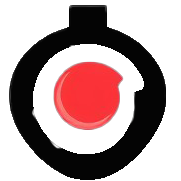Researchers have figured out how to wake up dormant stem cells in the brain that have the ability to grow into new cells. It opens the door to developing new therapies for neurodevelopmental disorders like autism, learning disabilities, and cerebral palsy.
Stem cells in the brain, called neural stem cells (NSCs), have the ability to proliferate, differentiate, and undergo a process of cell death. Most of the NSCs in our brains exist in a dormant state, waiting for a signal that will reactivate them to undertake neurogenesis or the formation of new nerve cells.
Evidence suggests that defective NSC reactivation may be associated with age-related cognitive decline and neurodevelopmental disorders, making identifying the mechanisms underlying the process important. Now, researchers from the Duke-NUS Medical School and the Mechanobiology Institute at the National University of Singapore (NUS) have gone further, discovering a method of activating dormant NSCs.
“Our findings add new knowledge to the limited body of research on mechanisms governing the reactivation of dormant neural stem cells,” said Professor Wang Hongyan, acting program director of the Neuroscience and Behavioral Disorders Research Program at Duke-NUS and the study’s corresponding author.
For the present study, the researchers experimented on fruit flies (Drosophila). In Drosophila, the presence of dietary amino acids is sensed by the fat body, a functional equivalent of the human liver and adipose tissue, which triggers the production of insulin-like peptides by cells in the blood-brain barrier. These peptides, in turn, activate the insulin-like growth factor 1 (IGF-1) signaling pathway in NSCs and triggers their reactivation. Human NSCs are also activated by IGF-1 signaling.
Dormant NSCs in Drosophila have a protrusion that extends from the cell body; the researchers had recently demonstrated that the protrusion is enriched with actin microfilaments. Actin is a protein that, among other functions, provides mechanical support and determines cell shape. The arrangement of actin within cells is regulated by another type of protein called formin, which accelerates the assembly of a particular actin, filamentous actin (f-actin).
“We decided to home in on this pathway as variants in formin levels are associated with neurodevelopmental disorders like microcephaly in humans,” said Dr Lin Kun-Yang, a research fellow at Duke-NUS at the time of the study and the lead author. Microcephaly is a condition in which a baby’s head is significantly smaller than expected, often due to abnormal brain development. “Understanding this pathway could provide new insights into developing solutions to treat neurodevelopmental disorders.”
Using super high-resolution microscopy, the researchers examined the cellular protrusions, which are about 1.5 µm in diameter, 20 times smaller than the diameter of a human hair. They found that astrocytes, a type of glial cell that holds neurons in place and helps them develop and work the way they should, produce a type of signaling protein called Folded gastrulation (Fog) that sets off a chain reaction that includes activating the formin pathway to control the assembly of actin filaments and roused the NSCs from their dormancy.
Receptors in NSCs called G protein-coupled receptors or GPCR responded to the astrocyte-produced Fog, activating a signaling pathway that regulated the formation of actin filaments in the stem cells.
“This not only advances our fundamental understanding of how astrocytes influence brain cell development but also opens new avenues for advancing therapies for neurological disorders, brain aging, and injury,” said Professor Patrick Tan, Senior Vice-Dean for Research at Duke-NUS. Tan was not involved in the study.
GPCRs are involved in sight, taste, smell, behavior, mood and immune system regulation. Even though the signaling molecules, types of GPCR, and mechanisms of action differ for each of these roles, they all involve G proteins that act as molecular switches and transmit signals from outside the cell to inside. Because of this, GPCRs have become a major drug target for treating various human diseases.
The researchers are currently investigating whether astrocytes produce other signals that influence the activity of NSCs. They also plan to explore whether similar mechanisms are involved in the development of the human brain.
The study was published in the journal Science Advances.
Source: Duke-NUS Medical School









